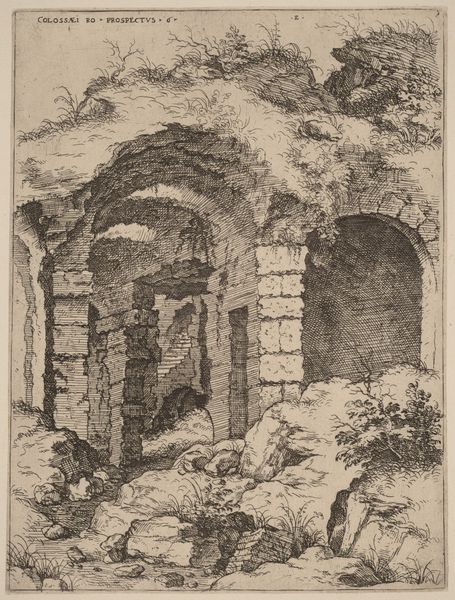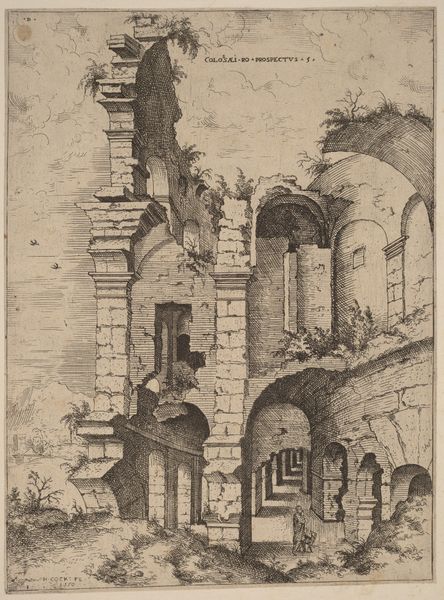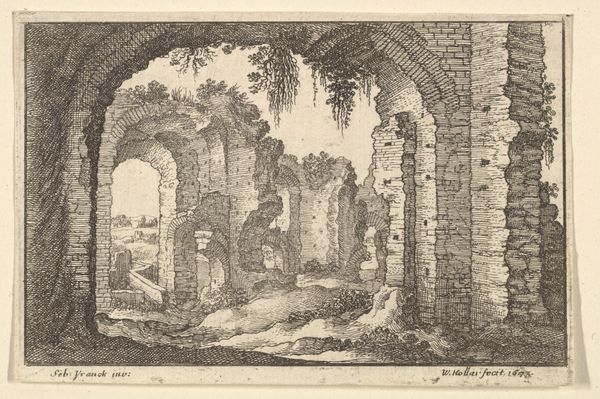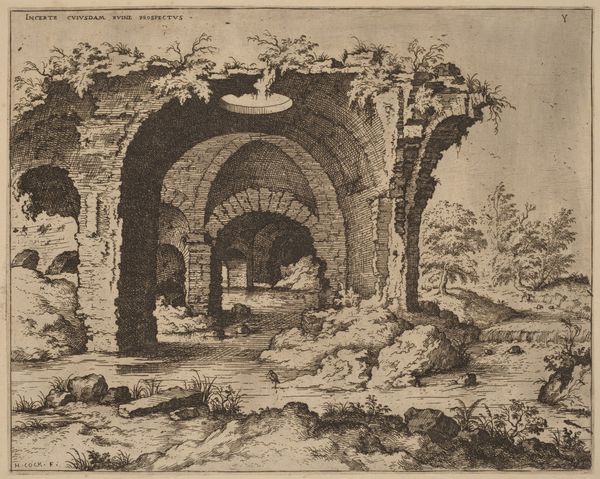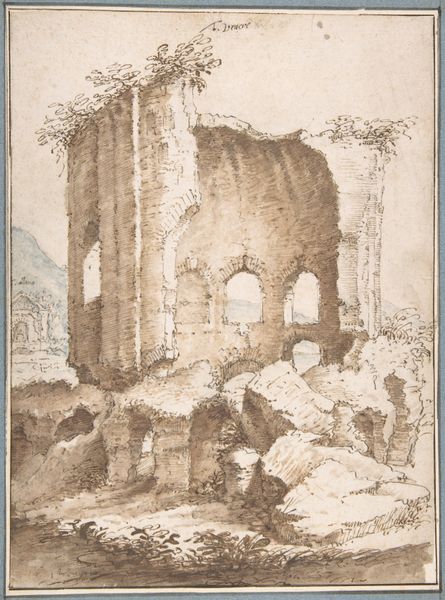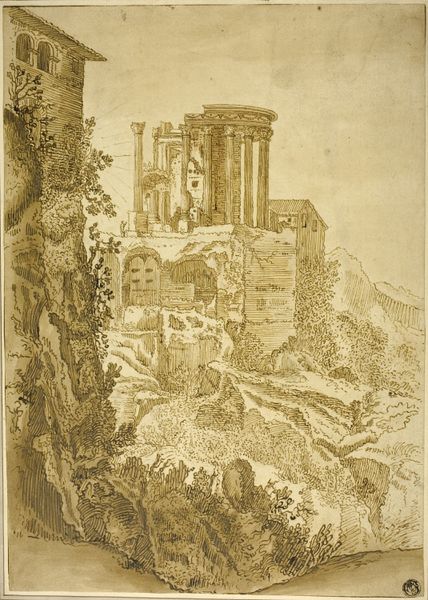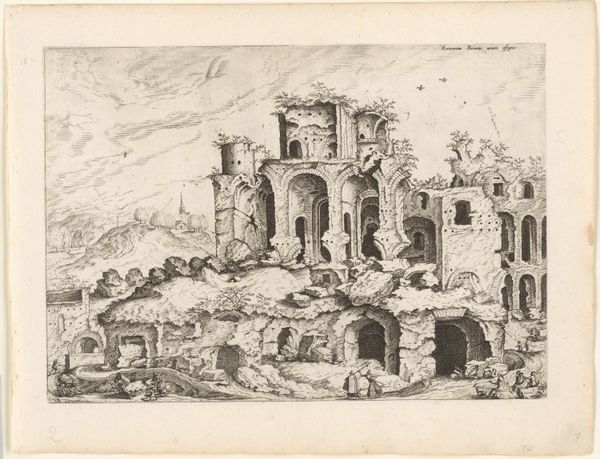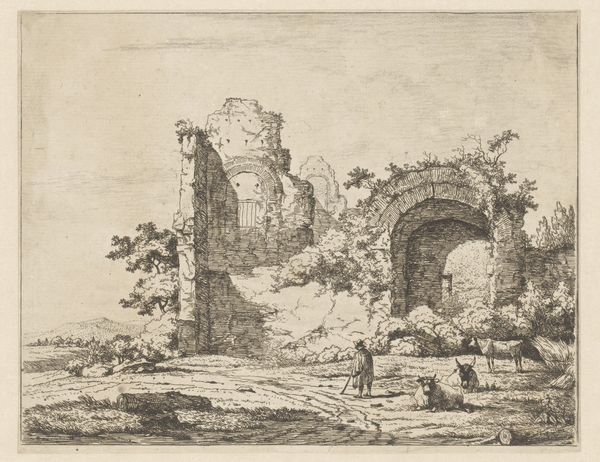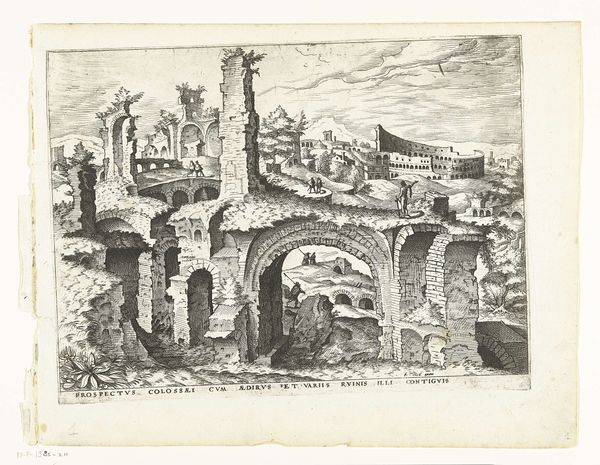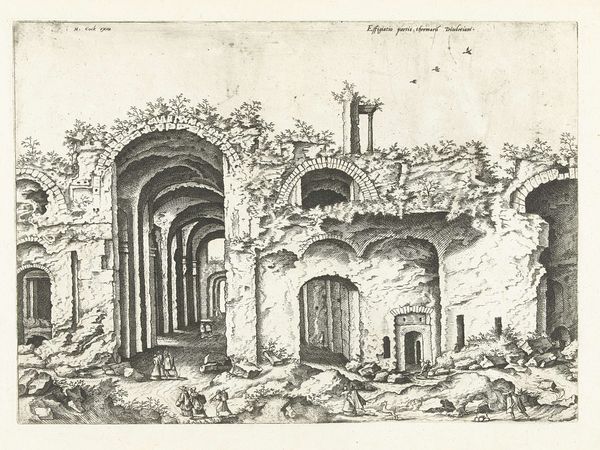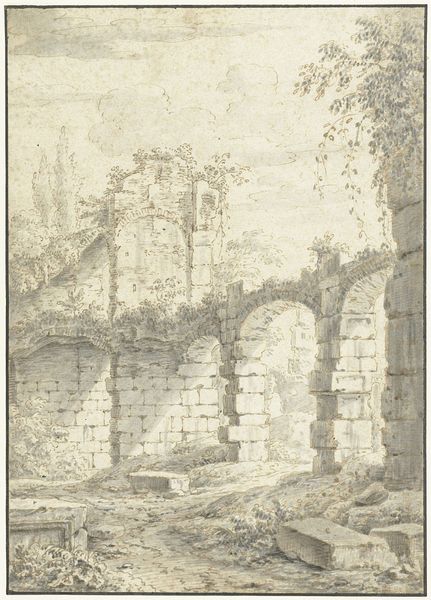
print, engraving, architecture
# print
#
landscape
#
figuration
#
11_renaissance
#
italian-renaissance
#
engraving
#
architecture
Dimensions: sheet (trimmed to plate mark): 32 x 22.7 cm (12 5/8 x 8 15/16 in.)
Copyright: National Gallery of Art: CC0 1.0
Curator: I find this rendering of the Colosseum incredibly haunting. There's a melancholy beauty in how Hieronymus Cock portrays its ruinous state. Editor: It is striking, isn't it? This engraving, titled "Seventh View of the Colosseum," dates back to around 1550 and gives us a peek into the Renaissance fascination with classical antiquity. But there is nothing triumphal in this ruin! Curator: Indeed, this is not just architecture; it’s a palimpsest of history etched in stone. Look how nature reclaims its space; vegetation crawls over the fallen arches. I wonder what that symbiosis means? This ruin feels like a metaphor for empires consumed and societal structures decaying. Editor: The arch itself carries symbolic weight: It frames experience and marks a passage through different realms of the self and spirit. But these specific arches no longer connect anything, symbolizing discontinuity. The architecture feels like a vessel, or rather, a broken vessel… abandoned but still echoing the human dramas it once housed. Curator: Absolutely. Consider who is represented in this narrative space. In the foreground, there's a small gathering of figures; what narratives are playing out there? What can we discern about class and identity among them as they navigate through and inhabit a fallen empire’s bones? The relationship of power has radically shifted. Editor: Observe also how Cock renders stone itself. Through his lines, he is recreating centuries of exposure and wear. Notice how the plants assert the earth's constant renewal, creating a juxtaposition of natural and man-made cycles. The architecture and foliage are almost merging into each other, pointing to a transformation into something new. It’s as though nature itself has grown from its foundations, offering a rebirth for both landscape and history. Curator: These multiple layers of decay, rebirth, and repurposed existence push us to critically examine the social and political stratifications reflected across time. Who had access to this place in its prime versus who is permitted—or chooses—to occupy this dilapidated landscape now? Editor: Precisely, and what did these viewers make of the ruin, even then? Through Cock's detailed vision of what endures versus what disappears, perhaps we, too, might understand what shapes lasting memory.
Comments
No comments
Be the first to comment and join the conversation on the ultimate creative platform.
